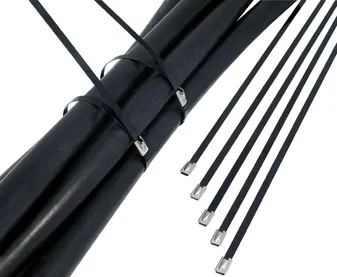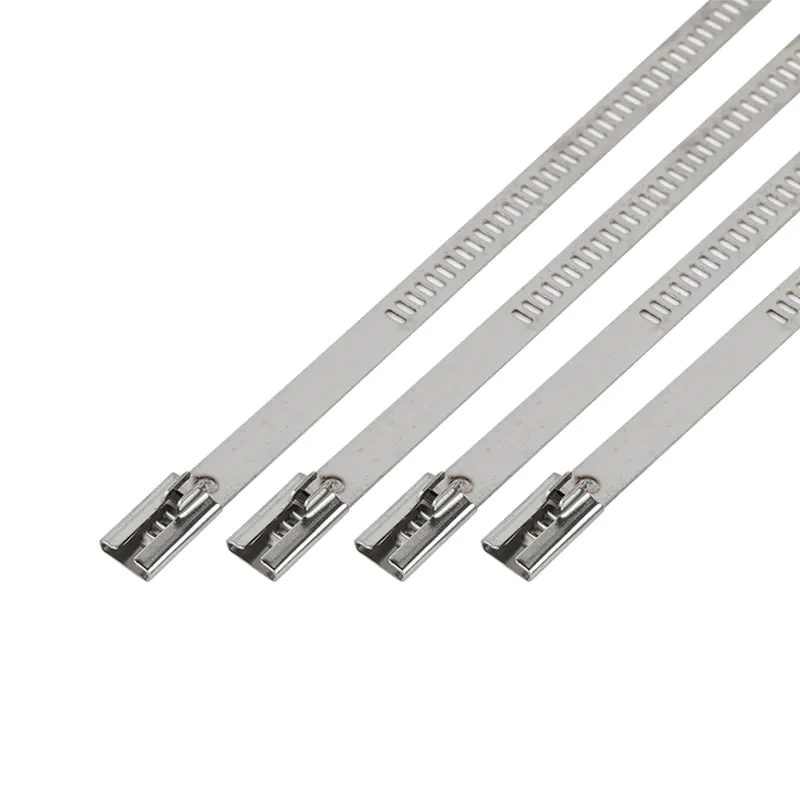What Are Stainless Steel Cable Ties and How Do They Work?
Introduction
In industrial settings, outdoor installations, or even heavy-duty DIY projects, securing cables, pipes, or components requires a solution that’s strong, durable, and resistant to the elements. While plastic cable ties are common for light-duty tasks, they often fall short in harsh environments or high-stress applications. That’s where stainless steel cable ties step in—reliable, long-lasting, and built to tackle the toughest fastening challenges. But what exactly are they, and how do these robust fasteners get the job done? Let’s dive in.
What Are Stainless Steel Cable Ties?
Stainless steel cable ties (also known as stainless steel zip ties or metal cable ties) are heavy-duty fastening devices designed to secure, organize, and bundle items like cables, hoses, pipes, and equipment. Unlike their plastic counterparts, they’re crafted from high-grade stainless steel—typically 304 stainless steel (for general use) or 316 stainless steel (for corrosion-prone environments like marine or chemical settings).
Key Components of Stainless Steel Cable Ties
Most stainless steel cable ties consist of two core parts:
Tie Body: A thin, flexible strip of stainless steel with evenly spaced teeth or grooves along one side. This strip is designed to be wrapped around the items you’re securing.
Locking Mechanism: A small, integrated clasp (usually made from the same stainless steel) located at one end of the tie body. The lock contains a spring-loaded pawl (or ball bearing, in some designs) that engages with the teeth on the tie body to create a secure, non-slip hold.
Some variants also include additional features, such as:
Releasable locks: For applications where adjustments or reuse are needed.
Coated surfaces: A layer of PVC or nylon to prevent scratching delicate materials (e.g., polished pipes or electrical cables).
Pre-cut lengths: Ranging from a few inches to several feet, to suit different bundling needs.
How Do Stainless Steel Cable Ties Work?
The functionality of stainless steel cable ties is simple yet effective, relying on a mechanical locking system that ensures a tight, permanent (or reusable) hold. Here’s a step-by-step breakdown of how they operate:
Prepare the Items to Be Secured
First, gather the cables, pipes, or components you want to bundle and arrange them neatly. Ensure there are no sharp edges that could damage the tie (or vice versa) if using an uncoated variant.
Wrap the Tie Around the Bundle
Take the stainless steel cable tie and loop the non-locking end (the free end of the tie body) around the bundle. Pull it snugly to ensure the items are held together tightly—avoid over-tightening, as this could crush delicate components (e.g., small electrical cables).
Insert the Tie into the Locking Mechanism
Feed the free end of the tie body through the opening in the locking clasp. As you pull the end through, the pawl (or ball bearing) inside the lock engages with the teeth on the tie body. This ratchet-like mechanism allows the tie to be pulled tighter but prevents it from slipping backward.
Trim Excess Length (If Needed)
Once the bundle is securely fastened, use a pair of heavy-duty wire cutters or bolt cutters to trim the excess length of the tie body. This not only improves the neatness of the installation but also eliminates sharp, protruding ends that could pose a safety hazard.
Releasing (For Releasable Models)
For releasable stainless steel cable ties, simply press down on the pawl inside the lock to disengage it from the tie body’s teeth. This allows you to loosen or remove the tie without damaging it, making it ideal for temporary installations or projects that require adjustments.
Why Choose Stainless Steel Cable Ties Over Plastic?
Stainless steel cable ties offer several key advantages that make them indispensable in demanding environments:
Exceptional Strength: They can withstand much higher tensile loads than plastic ties, making them suitable for securing heavy items (e.g., industrial pipes or large cable bundles).
Corrosion Resistance: 304 and 316 stainless steel resist rust, moisture, and chemical exposure—perfect for outdoor use, marine applications, or industrial settings with harsh chemicals.
Temperature Tolerance: They perform reliably in extreme temperatures, from -40°F (-40°C) to over 1,000°F (538°C), unlike plastic ties, which can become brittle in cold or melt in heat.
Durability: Stainless steel ties have a much longer lifespan than plastic, reducing the need for frequent replacements and lowering long-term maintenance costs.
Security: Their strong locking mechanism makes them tamper-resistant, a crucial feature for sensitive applications like electrical systems or security installations.
Common Applications of Stainless Steel Cable Ties
Thanks to their versatility and durability, stainless steel cable ties are used across a wide range of industries:
Construction: Securing electrical cables, HVAC ducts, and plumbing pipes in commercial or residential buildings.
Marine: Fastening wires, hoses, and equipment on boats or offshore platforms (316 stainless steel is preferred here for saltwater resistance).
Automotive: Organizing wiring harnesses under the hood, where high temperatures and vibration are common.
Industrial Manufacturing: Bundling cables on production lines, securing heavy machinery components, or organizing pipes in chemical plants.
Outdoor Infrastructure: Securing streetlight wiring, telecommunications cables, or solar panel components, which are exposed to wind, rain, and UV radiation.
Aerospace: Lightweight yet strong variants are used to secure cables and components in aircraft, where reliability is critical.
How to Choose the Right Stainless Steel Cable Tie
To get the most out of your stainless steel cable ties, consider these factors when selecting a product:
Material Grade: Opt for 304 stainless steel for general-purpose use (e.g., indoor industrial settings). Choose 316 stainless steel for marine, coastal, or chemical environments.
Length and Width: Select a tie length that’s slightly longer than the circumference of your bundle. Wider ties (e.g., 0.25 inches vs. 0.12 inches) offer higher tensile strength for heavier loads.
Lock Type: Choose a standard non-releasable tie for permanent installations, or a releasable model if you need to adjust or reuse the tie.
Coating: If securing delicate surfaces, look for ties with a PVC or nylon coating to prevent scratching.
Tensile Strength: Check the manufacturer’s specifications for tensile strength (usually measured in pounds) to ensure the tie can handle the weight of your bundle.
FAQ
Q: Can stainless steel cable ties be reused?
A: Standard stainless steel cable ties are designed for one-time use, as trimming the excess length or attempting to release the lock can damage the tie. However, releasable models feature a reusable locking mechanism that allows for multiple uses.
Q: Are stainless steel cable ties resistant to rust?
A: Yes—304 and 316 stainless steel both contain chromium, which forms a protective oxide layer that resists rust and corrosion. 316 stainless steel also includes molybdenum, making it more resistant to saltwater and harsh chemicals.
Q: How do I cut stainless steel cable ties safely?
A: Use heavy-duty wire cutters, bolt cutters, or specialized cable tie cutters. Avoid using regular scissors or lightweight tools, as they may not cut through the stainless steel cleanly and could cause the tie to bend or splinter. Always wear gloves to protect your hands from sharp edges.
Q: Can stainless steel cable ties be used outdoors?
A: Absolutely—they’re ideal for outdoor use due to their resistance to moisture, UV radiation, and temperature extremes. For coastal or marine environments, 316 stainless steel is recommended for maximum corrosion resistance.
Final Thoughts
Stainless steel cable ties are the unsung heroes of heavy-duty fastening, offering strength, durability, and reliability that plastic ties simply can’t match. Whether you’re working on an industrial project, a marine installation, or a DIY task that demands long-lasting results, these metal fasteners deliver consistent performance in even the harshest conditions.
By understanding how they work, their key advantages, and how to choose the right one for your needs, you can ensure your bundles stay secure for years to come. Ready to upgrade your fastening game? Invest in high-quality stainless steel cable ties—and never worry about flimsy, weather-worn fasteners again.
If you have more questions about stainless steel cable ties or need help selecting the perfect product for your project,contact us!





